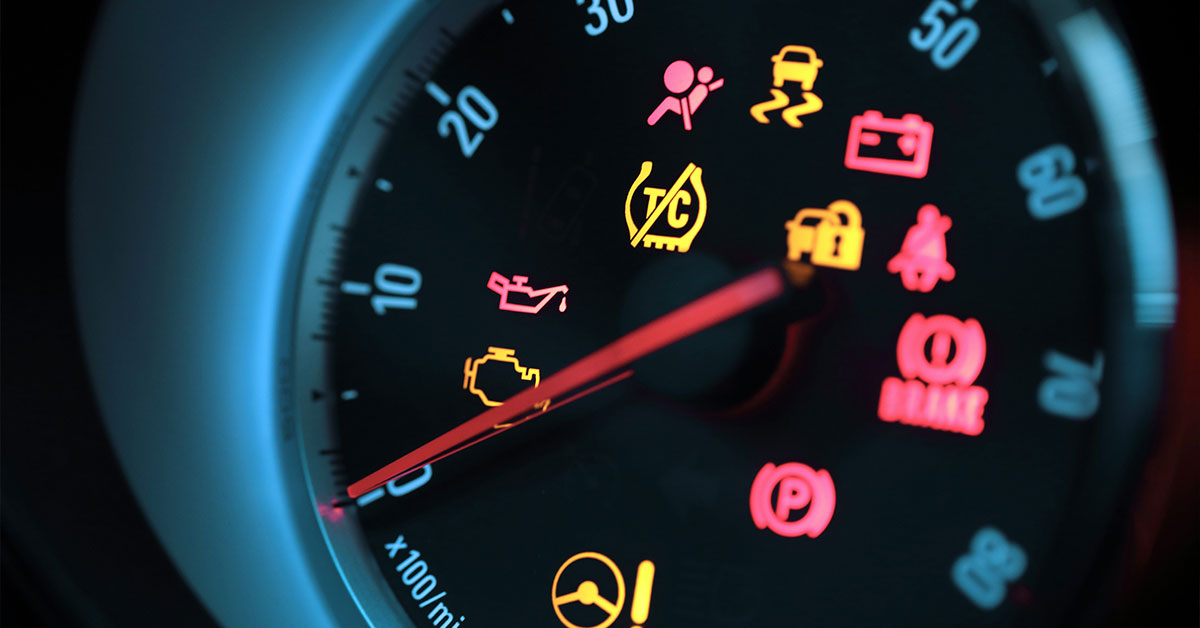Cars are terrific communicators – if you understand what they’re saying. Their language consists of a series of coloured lights that illuminate specific shapes on your dashboard. You’ll notice that all these symbols light up on your dashboard when you turn the key in the ignition or, if yours is a keyless start when you press the ignition button. After a second or so, they disappear. If, however, a light happens to stay lit or lights up in the middle of a trip, your car isn’t just making idle chit-chat; it’s trying to tell you something important.
It could simply be that a car door isn’t properly closed, but it could also be that there’s a problem with the engine that needs urgent attention. The longer you leave it, the more damage is being done and the steeper the bill.
Here’s your guide to automobile speak.
What do the dashboard warning light colours mean?
Your car uses symbols to communicate, and colours indicate a problem’s urgency. Sometimes, these coloured lights come on in conjunction with a message, which can explain the situation even better.
Green or blue—Green or blue lights don’t indicate a problem. They simply mean that a particular system is on and working fine. Continue as normal.
Yellow or orange – your car’s computer system – known as the engine management system – has picked up on a potential fault. Yellow or orange lights mean that you can keep driving your car as you normally would, but you should have your car seen by a professional mechanic as soon as you can.
Red – it’s the universal colour for ‘WE HAVE A PROBLEM’. A red dashboard warning light means there is a serious issue with a component of your car. It could be that the engine is overheating or your brakes are in danger of failing. Needless to say, you need to find a safe place to pull over and seek assistance immediately.
What do the common dashboard warning lights mean?
Since their introduction in 1933 (that’s right – dashboard warning lights have been around for nearly 90 years), the number of lights and the components they refer to have proliferated. Below, we go through the most common ones that are generally found in all cars, what they mean, and what you should do if they light up.
Check Engine
This is probably the scariest warning light for a driver to see – but it’s also the most ambiguous. When the Check Engine light illuminates, it could mean anything from a loose petrol cap to a very serious problem with the engine itself.
Regardless, you need to get to the source of the problem as soon as you can. Get your car to your local service centre so they can run a diagnostic test.
Battery
On many occasions, when this one lights up, the driver is probably trying to start the car to no avail, in which case you don’t need the warning light to tell you there’s an issue. However, if your car starts and drives normally, that doesn’t mean this light can be ignored. It probably indicates there’s a long-term issue with the battery, or maybe the alternator is slowly failing, or worse still, it’s stopped spinning. Either way, it needs to be seen, too.
Brake System
For obvious reasons, this warning light needs to be heeded. While it can indicate many different issues, none are safely ignored. It could be a simple fix (you’ve left the handbrake on), but it could also mean worn brake pads or low brake fluids. Get it checked immediately.
ABS
Yes, there is usually a separate warning system and light for ABS. If the ABS light comes on, it could mean your ABS is at risk of failing, the sensors at the wheels are malfunctioning, or something else altogether. Once again, get it checked immediately.
Oil Pressure
When this light illuminates, it either means there isn’t enough oil to lubricate the engine or the pump isn’t circulating it adequately. We’ve talked about the importance of engine oil before; ignore this light at your car’s and your wallet’s peril. Without adequate lubrication, untold damage will be done to core components.
Engine Temperature
If this one lights up, you’ll probably see steam rise from around the bonnet. Your engine is overheating, so you need to pull over immediately and switch the engine off. Don’t open the bonnet, as you may get burned from steam or smoke. Just wait fifteen minutes to see if the temperature drops. Many things, such as a broken coolant hose or malfunctioning fan, can cause overheating. You may need a tow to get you to your service centre.
Fuel Light
Given the price at the bowser these days, this light is illuminating more frequently than ever across cars all over Melbourne. The solution is obviously to fill up with fuel. A common question is, ‘How long can I drive with the fuel light on?’. The answer varies, but anywhere between 50 and 90 kilometres.
How do I reset my dashboard warning lights?
By having the issue addressed. These warning lights exist for a reason. If your car thinks something is wrong, it generally is. Ignoring the issue is bad for your wallet and potentially bad for your health and the health of other road users. Resolve warning lights by taking your car to your local service centre so the issue can be fixed. Don’t try to ‘solve’ the issue by having the warning lights disabled. That’s called treating the symptom, not the disease.
If you notice a dashboard warning light flashing orange or red, call our friendly team at BM Tech, and we’ll get you in straight away.
